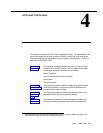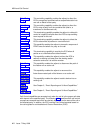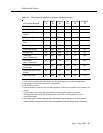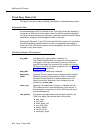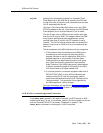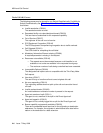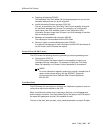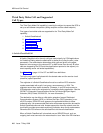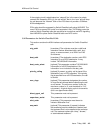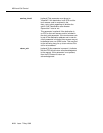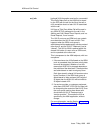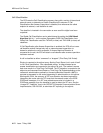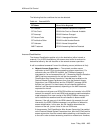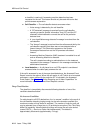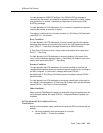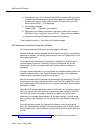
ASAI and Call Control
Issue 7 May 1998
4-9
If the outgoing trunk is administered as “network” [as in the case of a private
network with cascading ECS (s)], the call will fail; that is, the “user” end will drop
the call because the “network” trunk of the ECS does not provide a CONNect
ACKnowledgement.
PRI trunks should be accessed by Switch-Classified calls using AAR/ARS. The
use of TACs to access PRI trunks is not supported. Also, TAC dialing cannot be
used on Switch-Classified calls that are placed on trunks that use MFC signalling.
Use AAR/ARS to place Switch-Classified calls over MFC trunks.
Call Parameters for Switch-Classified Calls
This section contains the ASAI interface call parameters for Switch-Classified
calls.
orig_addr [mandatory] The originator must be a valid local
extension number associated with a split, hunt
group, or announcement, or a VDN in an EAS
environment.
dest_addr [mandatory] The destination can be a valid ECS
extension or an off-ECS destination. It may
include TAC/ARS/AAR information.
dest_route_select [optional] This parameter contains TAC/ARS/AAR
information for off-ECS destinations if the
information is not included in the dest_addr.
priority_calling [optional] If present, a priority call is placed if the
destination is an on-ECS extension. If the priority
flag is specified for an off-ECS destination, the call
is denied.
max_rings [optional] This parameter designates the number
of rings that are allowed before classifying the call
as no answer. The minimum number is two, the
maximum number is 15, and the default is 10 (if
not present). A typical ringing cycle is six seconds
(this is an approximate value).
direct_agent_call This parameter must not be present.
supervisor_assist This parameter must not be present.
alert_order [mandatory] This parameter must be set to
indicate “destination first.”
ans_mach [optional] This parameter (if present) indicates
that answering machine detection is desired and
the treatment that is to be applied to the particular
call. The treatment options are “drop,” “answer,”
or “administered treatment.”



